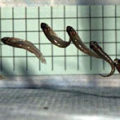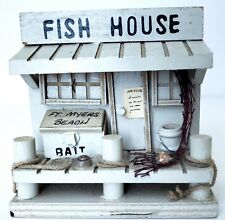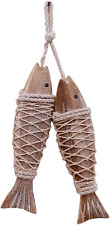
A study of more than two metric tons of North American, South American and European salmon has shown that PCBs and other environmental toxins are present at higher levels in farm-raised salmon than in their wild counterparts.
Researchers at Indiana University and five other research centers say increased toxin levels in farm-raised salmon may pose health risks to people who eat the economically important fish. Their study, which appears in this week’s issue of Science, is the most comprehensive analysis to date of salmon toxin concentrations.
“We think it’s important for people who eat salmon to know that farmed salmon have higher levels of toxins than wild salmon from the open ocean,” said IU School of Public and Environmental Affairs Distinguished Professor Ronald Hites, who led the study.
The researchers applied U.S. Environmental Protection Agency fish consumption advisory methods to determine consumption recommendations.
The production of farmed salmon has increased 40-fold over the last two decades, thanks in large part to the world’s salmon farms. Over half the salmon sold globally are raised in Northern Europe, Chile and North America.
While the health benefits of eating salmon have been established by numerous studies, concerns about the fish’s tendency to accumulate toxins have gone largely unaddressed. As fish eaters themselves, salmon occupy fairly high positions in their food chains. As a general rule, carnivorous animals tend to have higher concentrations of toxins in their bodies than herbivores.
To test this ecological principle, Hites and his colleagues measured organochlorine toxin levels in about 700 farmed and wild salmon. Farm-raised Atlantic salmon were purchased from retailers in London (U.K.), Frankfurt (Germany), Edinburgh (Scotland), Oslo (Norway), Paris (France), Toronto, Vancouver, Boston, Chicago, Denver, Los Angeles, New Orleans, New York, San Francisco, Seattle and Washington, D.C., and from wholesalers in North America, Chile and Europe.
For comparison, the researchers collected samples of five wild Pacific salmon species – Chinook, Coho, chum, pink and sockeye – from three different regions in North America. The researchers did not study farmed Pacific salmon or wild Atlantic salmon because fish from the two groups are difficult to obtain.
The researchers analyzed the concentrations of 14 organochlorine toxins in salmon from each collection site, using gas chromatographic high-resolution spectrometry. The toxins they studied were polychlorinated biphenyls (PCBs), dioxins, toxaphene, dieldrin, hexachlorobenzene (HCB), lindane, heptachlor epoxide, cis-nonachlor, trans-nonachlor, gamma-chlordane, alpha-chlordane, Mirex, endrin and total DDT. Many of these toxins, including PCBs, dioxins and toxaphene, are each “reasonably anticipated to be a human carcinogen,” according to a recent report by the U.S. Department of Health and Human Services.
When samples from all over the world were grouped, the researchers found farm-raised Atlantic salmon had significantly higher levels of 13 toxins when compared with wild Pacific salmon. Breaking it down by region, the researchers found levels of all 14 toxins were significantly elevated in both European and North American farm-raised salmon when compared with wild Pacific salmon. Levels of only 6 toxins were significantly elevated in South American farm-raised salmon. Levels of two toxins (HCB and lindane) were actually significantly lower in farm-raised South American salmon than in wild salmon species.
Only PCBs, dioxins, dieldrin and toxaphene were used to calculate consumption safety guidelines, because the researchers deemed these four toxins to most strongly impact human health.
The researchers also found toxin levels in European farm-raised salmon were significantly higher than in North American or South American farm-raised salmon. Levels of PCBs, dioxins, toxaphene and dieldrin were highest in farmed salmon from Scotland and the Faroe Islands (Denmark) and lowest in farmed salmon from Chile and Washington state, though Hites pointed out that even these comparatively uncontaminated South American salmon had high levels of other toxins.
Hites and his colleagues also measured toxin levels in “salmon chow,” a mixture of ground-up fish and oil fed to farm-raised salmon. They found a strong correlation between the toxicities of chow and salmon, suggesting toxins are passed into the salmon from their feed.

















Comments are closed.